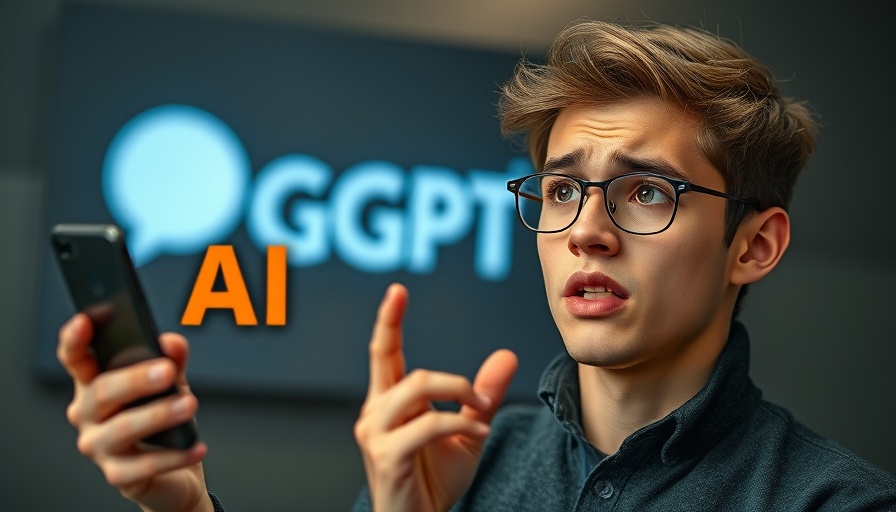
The Data Economy: A Hidden Goldmine
In today’s digital world, every click, tweet, and post we make contributes to an enormous data economy valued at about $1 trillion. Yet, the people who generate this vast amount of data—us, the everyday users—see very little in return. Companies like Meta, OpenAI, Microsoft, and Google are in a race to harness this data for their own gain, leaving individuals to wonder, "What about my data?" The discussion sparked by Ram Kumar in the recent video, The Real Value of Your Data Big Tech Won’t Tell You, underscores a fundamental shift shaping our relationship with technology and data ownership. What if we could change that narrative?
In The Real Value of Your Data Big Tech Won’t Tell You, Ram Kumar discusses the vital importance of data ownership and highlights Open Ledger as a transformative platform for users seeking to reclaim their data's value.
Why Data is the New Oil
Kumar likens the current data landscape to a modern-day oil rush. Just as nations once battled over oil reserves, corporations are now vying for our data. This comparison is particularly striking when you consider that an estimated 5% of the data out there is sourced from individuals. That means nearly $500 billion worth of personal data is being leveraged without any compensation for the contributing users. Places like Open Ledger are stepping into the fray, proposing solutions to help us gain ownership of our data.
Understanding Open Ledger: A New Paradigm for Data Sharing
At the core of Kumar's vision is Open Ledger, an AI blockchain platform that uniquely enables users to contribute their data while earning fair compensation. This platform allows individual contributors—from hobbyists to professionals—to share unique datasets that can train specialized AI models for various applications. Imagine sharing your knowledge about cooking or trading and receiving payment for it each time that data gets used. Sounds enticing, right?
The Emergence of Specialized AI Models
Kumar predicts a shift from generalized AI to more specialized models that will cater to specific industries and needs. With Open Ledger as a backdrop, users not only get compensated for their data but also empower the development of highly tailored AIs. For instance, a group of doctors is building a sleep health model that requires specialized datasets to correlate sleep patterns with health vitals. This kind of innovation exemplifies how targeted data can lead to advancements in various sectors, and how individual contributions can help make a difference.
Building a Community-Driven Ecosystem
The importance of community is vital in realizing this new model. Like Ethereum, which grew strong through a committed community, Open Ledger emphasizes the role of collective effort in achieving its goals. As more users contribute and engage with the platform, a robust culture around data ownership and fairness can flourish. Community members are not just participants, they become stakeholders in an evolving ecosystem, directly impacting how data is utilized and compensated.
The Ethical Implications of AI and Data Ownership
The ethical concerns surrounding AI usage cannot be ignored. As Kumar highlights, the risk of losing privacy and autonomy in our data-centric world is significant. By adopting a proof-of-attribution system, Open Ledger offers a viable path for accountable and transparent data usage. Contributors can see where their data is being used and how much they will earn, ensuring the power remains with the individual.
Future Trends: How This Impacts Us All
As AI continues to evolve, the landscape of data ownership will become increasingly critical. Future predictions suggest that AI will intersect more deeply with every facet of our lives—from healthcare to education. Just envision how a specialized AI could transform your healthcare experiences, or how customized models of learning could better cater to educational needs. As these AI systems develop, it’s imperative that users recognize their worth in the data economy, shifting from passive participants to active owners of their contributions.
Final Thoughts: Embracing Our Data Power
As we navigate this rapidly changing digital landscape, the message is clear. It’s time to reclaim ownership of our data and capitalize on its true value. The movement towards data ownership is not just about compensation; it’s about empowerment and transparency. With platforms like Open Ledger, there is an opportunity for individuals to not just contribute to the AI economy but to reap its rewards. Understanding this dynamic can transform how we interact with technology and ensure our data is treated as the valuable asset it truly is.
 Add Row
Add Row  Add
Add 




Write A Comment